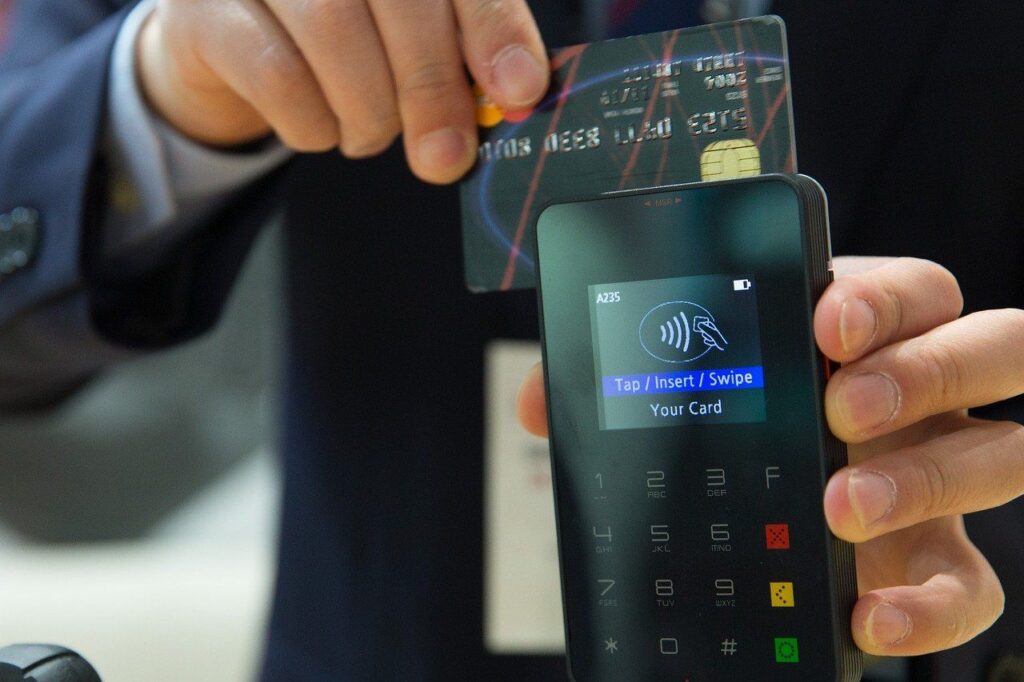Micromoments happen all the time. "I want it now," sounds like something a three-year-old might say in front of a lollipop shelf at a supermarket? Probably, but so do today's buyers. They want instant gratification and make decisions faster than ever before. Check how you can use it in marketing.
Micromoments are the result of the growing popularity of smartphones and the increasing use of these devices. Regardless of whether smartphone users are looking for a product or, for example, instructions on how to do something, they not only generally have higher expectations regarding how quickly they will find an answer to their question. They are also in a hurry to achieve their goals. Do you see this as an opportunity to acquire customers? Rightly. Micro moments can maximize the impact of marketing in this regard.
Do you see all the opportunities to acquire customers?
Don't miss any. We will help.
What are micromoments?
Scrolling Facebook while waiting for a dentist appointment. Search for nearby restaurants while deciding what to eat. A search for a product or service that we saw during the advertising break. Viewing reviews of sports watches. All these activities are constant user activities known as micro-moments.
Google introduced the term micro-moments for mapping customer journeys relatively recently, because in 2017, micro-moments appear when people reach for a device - usually a smartphone that is always at hand - to respond to the need to learn something, do something, check, view or purchase. In these moments, as customers, we often not only make purchasing decisions, but also take actual action - we buy. At times like this, our expectations are higher than ever. The powerful computers we carry in our pockets have taught us that brands will immediately get us exactly what we are looking for. And we want specific things. In addition, we want them right away.

Division of micromoments
The brilliant minds at Google quickly saw how micro-moments can be used. The marketing model that uses them refers to the decision points where buyers reach for mobile devices to get help in fulfilling their needs - do something, watch something, buy, discover, etc. Today's consumer expectations call for new ways of acting to better understand their needs. Micromoments are broken down into four key moments that really matter - this is when the iron should be forged while it is hot.
1. I want to knowor I-want-to-know moments are those moments when the user is looking for a product or information about it, but is not necessarily ready to buy.
2. I want to gothat is, I-want-to-go moments when the user enters more detailed keyword searches for local businesses (eg "near me", "in town X") or when considering a purchase in the neighborhood where they are located.
3. I want to do something, i.e. I-want-to-do moments when the user searches for new ideas on his device while performing a task or when he needs help in carrying it out (e.g. an instructional video).
4. I want to buythat is, I-want-to-buy moments when the user is focused on buying and uses the phone to decide what and how to buy.
As you can see, with the growing popularity of smartphones, the consumer's journey has been broken down into hundreds of micro-moments based on real-time intentions. Each of them is a critical opportunity for brands to shape consumer decisions and preferences.

The end of traditional marketing paths?
The concept of micromoments has changed the rules of the game for buyers and sellers. Does this mean that the traditional shopping path is heading towards prehistory? When we act according to our needs at any given moment, our expectations are high and our patience is low. This makes the quality, relevance and usefulness of your marketing strategies more important than ever. As our preferences and purchases are shaped in micro-moments, those companies that best meet customer needs at all times - especially on mobile devices, enjoy a huge competitive advantage. Why?
Many consumers are not brand involved at all. 90% smartphone users, when they start searching for product information on the Internet, are not completely sure about the specific brand they want to buy. 1 in 3 smartphone users purchased their smartphones from a company or brand other than the one they intended, because of the information provided at the time they needed it. This means that the company focuses on online marketing taking into account micro-moments has a chance to take over customers of competitors.
Moments are also moments that can build brand awareness. More than 50% smartphone users have discovered a new company or product while searching for something on their smartphones. What does "appearing in the game" ultimately mean? The brand will be chosen, not just seen. Being in the right place and time within the reach of potential customers has the opportunity to respond to the needs of consumers at the perfect time and help them make decisions. Think about it: to shop online, we don't sit down at our keyboards anymore. We reach for phones and make informed decisions by talking to colleagues at lunchtime or to family over morning coffee.
While mobility is driving this shift, micro-moments are a phenomenon that has ramifications far beyond smartphones. It affects the consumer's entire journey through screens, devices and channels. Take, for example, consumer behavior in retail stores: customer traffic has declined, but those who are are spending more. This is because they did their research and made decisions before they even got in. The same applies to consumers visiting websites. They tend to spend less time on it in a single visit, but convert more often. In many ways, micro-moments are traces that lead people to a specific store - online and in real life.

How to use micro-moments in content marketing?
As PR agency we see it vividly. Consumers are bombarded with marketing content every day, whether via email, social media or online advertising. Although most people voluntarily spend several hours a day on their smartphones, they still have a glut of content flooding them from everywhere. It's no wonder that companies find it increasingly difficult to capture the attention of consumers. But this change in their behavior also represents an opportunity. What is the best way to incorporate micro-moments into your brand strategy? Google recommends three tactics: be there, be useful, and be on time. Here are some helpful tips on how to apply these abstract formulas to your online marketing.
First, brands need to understand their target customers or buyers better than ever. Who is yours target group? What questions do consumers ask and when? What is the consumer's journey like? You need to anticipate micro-moments and fine-tune your content to those moments. Mobile optimization should be your top priority. Google research shows that every third user made a purchase from a company they did not know or were not going to make a purchase from, due to the information they found during the search. That is inbound marketing using a strong SEO strategy is what is sure to work.
Second, published content must provide relevant answers. They should clearly state that the company understands the problems and needs of the audience. Offer content in a variety of formats to reach different types of users. Always design your content for micromoments. For example, you can use well thought-out blog posts, compelling infographics, or explanatory videos.
Third, micro-moments need content that quickly reaches its destination. This requires a site that meets certain technical requirements. A user-friendly website is a key element when making a purchasing decision. Users must be able to quickly and intuitively navigate the site, especially on mobile devices. Otherwise, they will immediately give up their purchase and probably switch to the competition's side. These are the facts - the 29% of smartphone users will quickly leave the company's website if they don't find what they are looking for or if the website loads too slowly.
To take full advantage of micromoments, a broader perspective is needed. The company should provide trouble-free service across multiple screens and channels, and be able to measure the impact of the strategy adopted.

